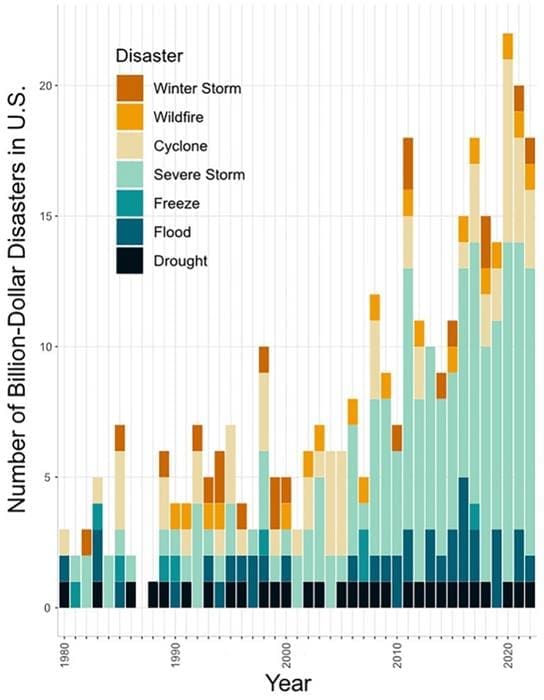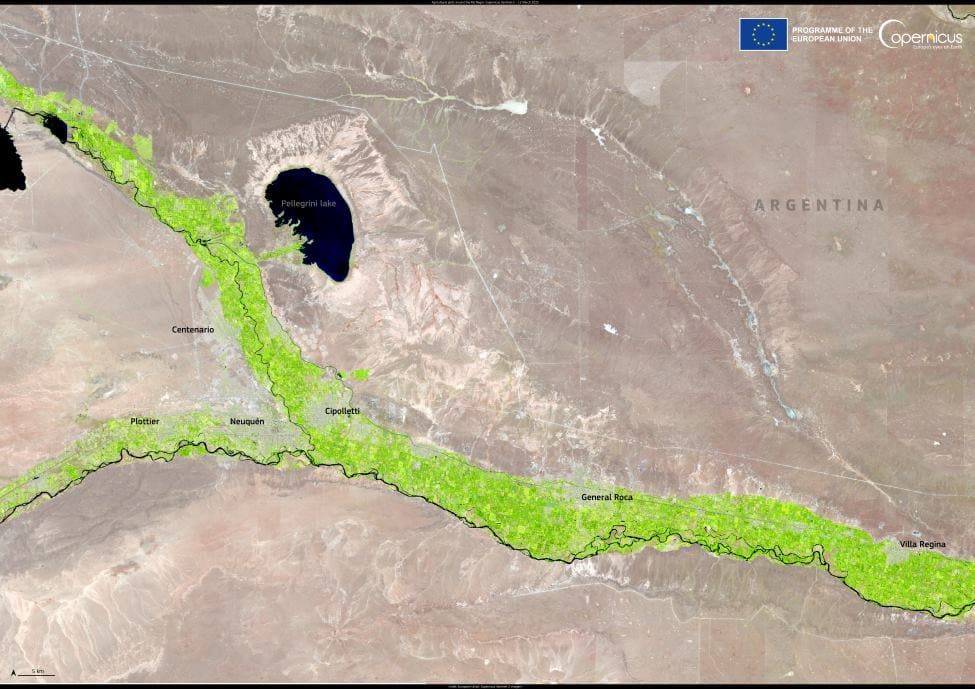By American Phytopathological Society
An often-overlooked component of natural and human-driven disasters is their potential to affect plant health and thus food security at domestic and international scales.
Most disasters have indirect effects on plant health through factors such as disruptions to supply chains and damaged infrastructure, but there is also the potential for direct effects from disasters, such as pathogen or vector dispersal caused by floods, hurricanes, and human migration.
These occurrences are rarely isolated and instead often occur simultaneously. We have seen examples of the concurrence of disasters in recent history through events such as market disruptions in the early days of the COVID-19 pandemic; the intense wildfires, hurricanes, and tornadoes that have ravaged in the years since 2020; the Ukraine-Russia war disrupting the global wheat supply; and so on.

The impacts of natural disasters on plant health can be seen after events such as when the soybean rust pathogen, Phakopsora pachyrhizi, was first detected in the United States in Louisiana shortly after Hurricane Ivan in 2004. Hurricane Ivan moved north from the lower Caribbean near Colombia and is believed to have moved spores into the United States.
Insect pests can also travel long distances during strong wind events. Bean golden yellow mosaic virus was likely introduced to Florida by Hurricane Andrew in 1992, which carried viruliferous whiteflies from the Caribbean islands. Bean golden yellow mosaic virus caused the reduction or collapse of bean production the following year and became established in Florida.
Wildfires also pose a significant risk for the spread of plant pathogens. Fire can damage forest ecosystems, leaving gaps that become habitats open to colonization by invasive pests and pathogens. For example, wildfires in California devastated the coastal mountain range, and new plantings to restore these areas were unknowingly contaminated with Phytophthora tentaculata, a quarantined pathogen that can cause root and crown rot. This has led to more complications, as forest managers now need to control both introduced diseases and future wildfires.
Human-driven disasters, such as armed conflicts, can also create conditions that are favorable to the spread of plant pathogens, leading to devastating consequences for crop production, food security, and overall instability in affected regions. Unrest may force farmers to rely on poor-quality seed with higher risk of disease, resulting in low yields.
The current war in Ukraine is an example of how all countries are vulnerable to armed conflict, which not only leads to crop loss and disease spread but also disrupts the global exchange of commodities. The invasion of Ukraine disrupted the global wheat supply and caused a 50% increase in global fertilizer prices due to Russia’s significant role as a supplier, accounting for 13% of the world’s fertilizer production. In the twenty-first century, poverty, political unrest, and inefficient regulation have significantly influenced the development of major plant disease epidemics.
With the increase in frequency and severity of these disasters, a cross-disciplinary team of researchers and humanitarian experts from the United States, Benin, Ecuador, Kenya, the Netherlands, Peru, Tanzania, and Thailand and led by Berea Etherton from the Garrett Lab at the University of Florida, Gainesville, published “Disaster Plant Pathology: Smart Solutions for Threats to Global Plant Health from Natural and Human-Driven Disasters” in the journal Phytopathology.
The framework highlighted in the article by Etherton et al. provides a multidisciplinary perspective on current threats and solutions to plant health and food security, encompassing the risk from environmental factors such as climate change, while also including factors such as political instability and war. The international team utilized the One Health framework, which addresses the interconnections among human, animal, plant, and environmental health.
Disaster plant pathology provides a framework focusing on the impact of disasters on plant health, plant pathogens, and agricultural systems for tailored solutions and informed decision making. This framework promotes interdisciplinary collaboration, making it of common interest for communities of plant pathologists, humanitarian groups, economists, computer scientists, meteorologists, and sustainable development strategists.

Disaster plant pathology offers solutions through “smart agriculture.” Utilization of the robust capabilities of artificial intelligence (AI) can provide early warning information systems, risk assessment, crop monitoring, supply chain optimization, decision-support, real-time monitoring, and resilience strategies.
There is potential for farmers and agricultural authorities to use these tools to make informed decisions and facilitate recovery efforts, thus minimizing the impact of disasters on agricultural systems. Through the integration of satellite imagery, weather data, disease incidence reports, early warning systems, and other relevant information, these models can identify patterns and predict the trajectory of pathogen movement.
Farmers and agricultural authorities can use these models to take preventive measures in areas at high risk of infection, effectively managing the spread of disease and accelerating recovery.
The interactions among natural and human-driven disasters, plant disease, and global food security are critical concerns that demand expertise and knowledge from scientists working in disaster plant pathology. Disaster plant pathology recommends actions for improving food security before and following disasters, including
- strengthening regional and global cooperation,
- capacity building for rapid implementation of new technologies,
- effective clean seed systems that can act quickly to replace seed lost in disasters,
- resilient biosecurity infrastructure and risk assessment ready for rapid implementation, and
- decision support systems that can adapt rapidly to unexpected scenarios.
Through predictive analyses, early warning systems, and real-time crop monitoring, humanitarian aid and governmental interventions can help to ensure the quality and safety of agricultural production for growers. The experts behind disaster plant pathology hope this framework incites collaboration at an international scale.
Lead author Berea Etherton said: “Our team of global researchers and humanitarian experts synthesized current knowledge about disaster effects and strategies for planning and response. We developed this new perspective, disaster plant pathology, so that others working to protect plant health and food security can build on it.”
These intricate relationships require global cooperation, and in the face of climate change and geopolitical complexities, a collective and proactive response is needed to protect plant health.
***
About Phytopathology
For over 100 years Phytopathology® has been the premier international journal for publication of articles on fundamental research that advances understanding of the nature of plant diseases, the agents that cause them, their spread, the losses they cause, and measures used to control them. Articles are characterized by their novelty, innovativeness, and the hypothesis-driven nature of their research.
Journal Reference:
Berea A. Etherton et al, ‘Disaster Plant Pathology: Smart Solutions for Threats to Global Plant Health from Natural and Human-Driven Disasters’, Phytopathology (2024). DOI: 10.1094/PHYTO-03-24-0079-FI
Article Source:
Press Release/Material by APS
Featured image credit: Pixabay | Pexels




